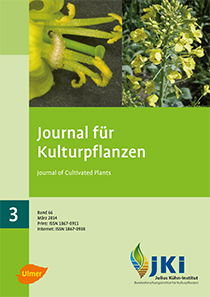Influence of repeated pyrethroid applications on the sensitivity of pyrethroid-resistant pollen beetles (<em>Meligethes aeneus</em> F.) and their offspring
Keywords:
lambda-cyhalothrin, oilseed rape, population dynamic, insecticide resistance, temporal variabilityAbstract
In the past, control of pollen beetles was mainly based on the application of synthetic pyrethroids. The frequent and indiscriminate use of this insecticide class resulted in a high selection pressure, ensuing in the formation of resistance, which has spread over the whole area of Germany and many European countries. Replacement by insecticides with other modes of action is limited as few alternative products are available.
To analyze the relative sensitivity of adult pollen beetles and their offspring to lambda-cyhalothrin, a field trial was conducted in 2012 which included two control plots without insecticide applications and two plots sprayed five times with lambda-cyhalothrin. The Adult-Vial-Test was used to analyze the sensitivity of the beetles when exposed to dosages from 0.015 to 0.375 μg lambda-cyhalothrin cm–2. All samples were classified as resistant or highly resistant. Over the trial period fluctuations of the sensitivity were noticed. Only small differences occurred between the sensitivity of beetles from treated and untreated plots. However, the fluctuation of the sensitivity between successive sampling dates was smaller in treated plots.
New generation pollen beetles were caught by using photoeclectors and the resistance classified relative to their parent generation. In comparison to the sensitivity of the overwintered generation, new generation beetles showed lower LD50-values. The number of larvae migrating to soil for pupation in plots treated with lambda-cyhalothrin, was 18% lower than in untreated plots. Similar differences occurred with the number of emerging adults of the new generation. This indicates a negligible effect of pyrethroid applications on population dynamics of resistant pollen beetles.
DOI: 10.5073/JfK.2014.03.01, https://doi.org/10.5073/JfK.2014.03.01
Published
Issue
Section
License
The content of the journal is licensed under the Creative Commons Attribution 4.0 License. Any user is free to share and adapt (remix, transform, build upon) the content as long as the original publication is attributed (authors, title, year, journal, issue, pages).
The copyright of the published work remains with the authors. The authors grant the Journal of Cultivated Plants, the Julius Kühn-Institut and the OpenAgrar repository the non-exclusive right to distribute and exploit the work.







